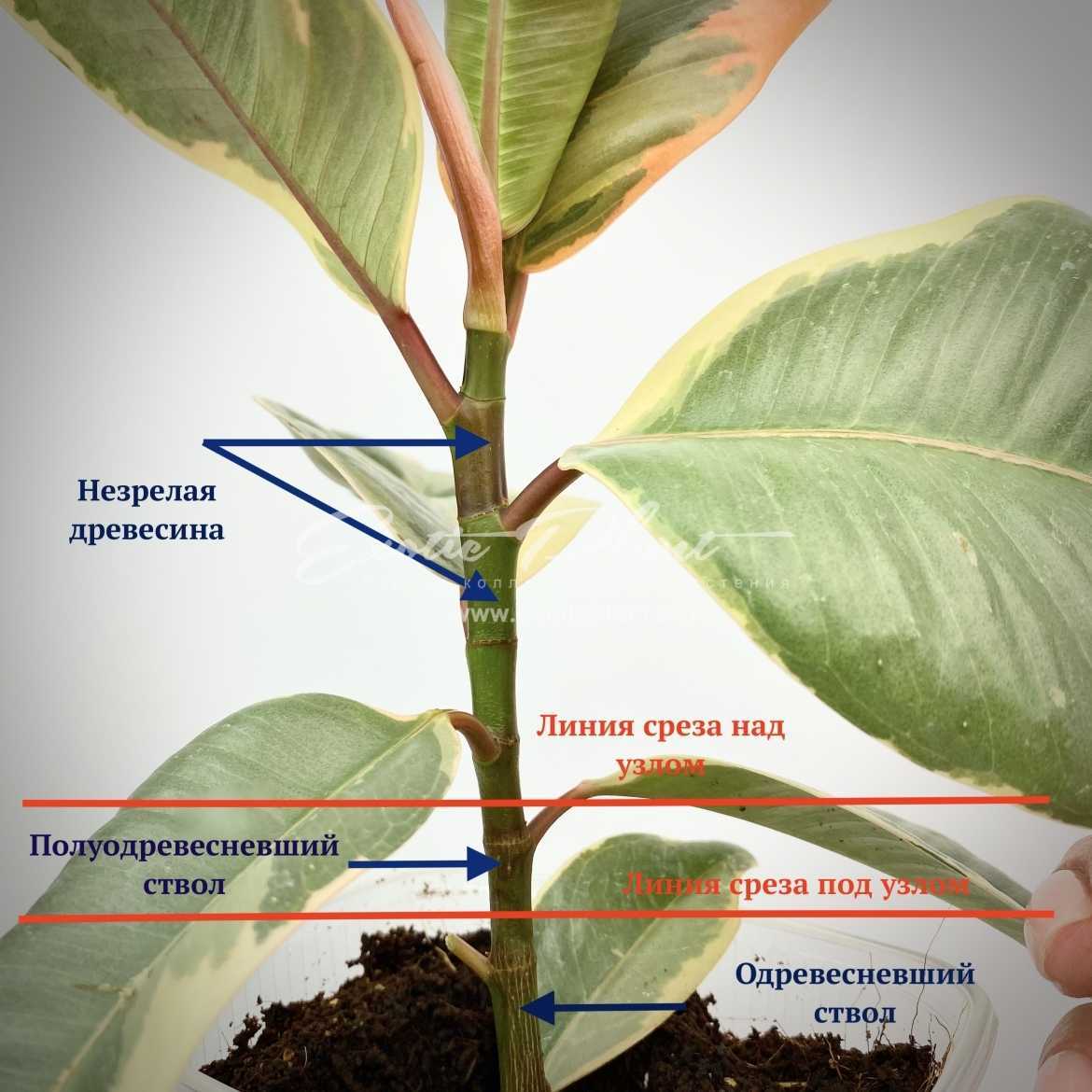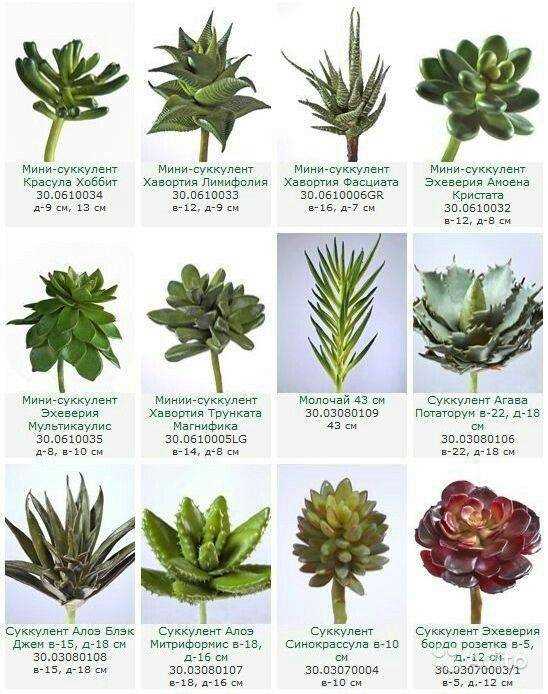- Начало работы
- Подготовка почвы
- Компоненты почвы
- Выбор семян
- Посадка семян
- Обеспечение оптимальных условий
- Полив
- Удобрение
- Как правильно удобрять фикус?
- Какой выбрать удобритель для фикуса?
- Как правильно удобрять фикус?
- Пересадка
- Обрезка
- Профилактика болезней и вредителей
- 1. Умеренный полив и контроль за влажностью
- 2. Регулярная обработка от вредителей
- 3. Правильная подкормка и уход за растением
- Уход и рост растения
- Полив
- Удобрение
- Обрезка
- Вопрос-ответ:
- Как размножить фикус в домашних условиях?
- Как выбрать подходящую ветку для размножения фикуса?
- Какой грунт подходит для укоренения черенков фикуса?
- Как правильно ухаживать за укорененными черенками фикуса?
Фикус является одним из самых популярных декоративных растений, который можно увидеть во многих домах и офисах. Он обладает красивыми глянцевыми листьями и интересной формой ствола, что делает его невероятно привлекательным для воздухоочистки помещения и создания уютной атмосферы. При этом, фикус очень легко размножается, и вы можете сами получить из одного растения целую коллекцию раскидистых деревьев.
Самым популярным и простым способом размножения фикуса является черенкование. Для этого необходимо выбрать здоровые и крепкие стебли с 2-3 листочками на каждом, обрезать их под углом, чтобы повысить площадь контакта с водой, и поместить в стеклянную емкость с чистой водой. Через несколько недель появятся корни, и можно будет пересадить черенки в грунт.
Важно помнить, что для размножения фикуса необходимо обеспечить оптимальный уровень влажности и освещенности. Место для размножения выбирайте с диффузным светом, чтобы не прямые солнечные лучи не вызывали ожоги листьев. Также следите за влажностью почвы и не допускайте пересыхания или переувлажнения.
Если черенкование вам не подходит, можно попробовать размножить фикус с помощью воздушных корней. Для этого выберите крупное и здоровое растение, обвяжите стебель специальным материалом и укройте субстратом. Через некоторое время появятся новые корни, и вы сможете отделить от материнского растения и посадить новое.
Размножение фикуса – это простой и приятный процесс, который позволяет не только украсить ваш дом красивыми растениями, но и поделиться ими с друзьями и близкими. Попробуйте разные методы размножения и наслаждайтесь результатом – ваши фикусы обязательно станут украшением интерьера и принесут радость в вашу жизнь.
Начало работы
Размножение фикуса – процесс, который позволяет получить новые растения из уже имеющихся. Чтобы начать размножение фикуса, нужно подготовиться и выбрать правильные материалы и инструменты.
Первым шагом является выбор здорового и сильного фикуса, от которого вы будете брать отростки или срезы для размножения. Важно выбрать растение, которое имеет хорошую форму и здоровые листья. Оно должно быть достаточно зрелым, чтобы быть готовым к размножению.
Помимо фикуса вам потребуется некоторые инструменты, какими являются секаторы или острые ножницы, чтобы сделать чистые и ровные срезы. Также понадобится контейнеры или горшки для размещения срезов или отростков фикуса. Важно выбрать контейнеры с хорошей дренажной системой, чтобы предотвратить загнивание корней.
Рассмотрим несколько методов размножения фикуса: черенкование, срезы побегов и разделение корневого кома. Каждый из этих методов имеет свои особенности и требует определенной подготовки и ухода.
Подготовка почвы

Для успешного размножения фикуса в домашних условиях необходимо подготовить подходящую почву. Правильный подбор почвенной смеси будет способствовать хорошему росту и развитию растения.
Основная составляющая подготовки почвы – выбор подходящих компонентов. Они должны обеспечить необходимые питательные вещества и хорошую воздухопроводимость.
Компоненты почвы
Одним из основных компонентов почвы для фикуса является торф. Он обеспечит необходимую кислотность и увлажнение субстрата. Для улучшения структуры почвенной смеси можно добавить перлит или вермикулит. Они помогут сохранить влагу и улучшить ее дренаж.
Также в составе почвы можно использовать песок или керамзит для обеспечения хорошей воздухопроницаемости. Они помогут предотвратить загнивание корней и размножение грибковых инфекций.
Для повышения плодородия почвы рекомендуется добавлять компост или перегной. Они обогатят почву органическими веществами и позволят растению получать необходимые питательные вещества.
Выбор семян
При размножении фикуса в домашних условиях можно использовать как семена, так и черенки. Выбор метода зависит от ваших предпочтений и доступности материала.
Если вы хотите вырастить фикус из семян, то важно обратить внимание на их качество. Лучше всего покупать семена в специализированных магазинах или у проверенных продавцов. Важно выбирать семена свежие, без повреждений и гнили. Чтобы увеличить вероятность прорастания, можно предварительно пропитать семена в растворе стимулятора роста.
Если же вы предпочитаете размножать фикус черенками, то следует выбирать здоровые и сильные ветки для отрезания. Черенки лучше всего отрезать с конца ветки или поближе к основанию растения. Обрезки следует делать под углом, чтобы увеличить площадь контакта черенка с субстратом.
Какой метод выбрать – решать вам. Оба подхода имеют свои преимущества и недостатки. Важно помнить, что в любом случае процесс размножения потребует времени, терпения и определенных знаний.
Посадка семян

Фикус можно размножать с помощью семян, но это метод относительно редко используется, так как он требует больше времени и усилий. Однако, посадка семян фикуса может быть интересным процессом для любителей растений.
Перед посадкой нужно выбрать зрелые и здоровые семена, которые могут быть собраны из спелых плодов фикуса. Семена следует промыть и обеззаражить в слабом растворе перекиси водорода.
Для посадки семен можно использовать грунт, состоящий из равных частей песка и перегноя. Семена следует посадить на глубину около 1-2 см и накрыть пленкой для создания теплицы.
После посадки семена нужно поставить в теплое и светлое место, где температура будет колебаться в пределах 25-30 градусов Цельсия. Семена начнут прорастать через 3-4 недели.
После прорастания семян, растения следует выращивать в отдельных горшках, обеспечивая им яркий свет и умеренный полив. При благоприятных условиях, через несколько месяцев фикус станет достаточно крупным, чтобы пересадить его в постоянный горшок.
Обеспечение оптимальных условий
Для успешного размножения фикуса в домашних условиях необходимо создать оптимальные условия для роста и развития растения.
Во-первых, следует обеспечить фикусу достаточное количество света. Растение предпочитает яркий diff_light, но не переносит прямые солнечные лучи, которые могут вызвать ожоги на листьях. Поэтому лучшим местом для размещения фикуса будет окно, которое не освещается прямыми лучами солнца.
Во-вторых, необходимо обеспечить оптимальную температуру для фикуса. Идеальная температура для роста растения составляет 20-25 градусов по Цельсию. Важно избегать перепадов температур и резких изменений, которые могут негативно сказаться на здоровье фикуса.
В-третьих, важно обеспечить регулярный полив фикуса. Растение любит влажную почву, но не переносит застойной влаги. Поэтому рекомендуется поливать фикус после того, как верхний слой почвы хорошо просохнет. Также можно увлажнять воздух вокруг растения, распыляя воду из пульверизатора.
В-четвертых, регулярное удобрение фикуса поможет ему получать необходимые питательные вещества для активного роста. Рекомендуется применять универсальное минеральное удобрение для комнатных растений раз в две недели во время активного роста и раз в месяц в период покоя.
В-пятых, следует обеспечить фикусу достаточное пространство для роста. Растение имеет раскидистую крону и широкие листья, поэтому необходимо выбрать достаточно просторный горшок для посадки фикуса и регулярно подрезать его ветви для формирования красивой формы.
Соблюдение этих рекомендаций поможет обеспечить оптимальные условия для размножения фикуса и получение здорового и красивого растения.
Полив
Фикус – растение, которое любит умеренное поливание. Оно не терпит переувлажнения, поэтому регулярный контроль влажности почвы очень важен. Подкормка фикуса проводится только в период активного роста, обычно с весны до осени. В зимнее время растение находится в фазе покоя, поэтому его поливание должно быть снижено до минимума.
Определение необходимости полива можно осуществлять с помощью простого теста – пальцем проверить влажность верхнего слоя почвы. Если он ощущается сухим, то растение нуждается в поливе. Но следует помнить, что чрезмерно сухая почва может также повредить фикус. Поэтому желательно установить регулярный график полива и придерживаться его.
Полив фикуса производится осаждаемой или розовой водой при комнатной температуре. Растение поливается излишком воды через поддон – таким образом корни не будут перенасыщены влагой. Стоит отметить, что частый полив может привести к гниению корней и «засыпанию» влажной почвы.
Так стоп!!! Вы всё ещё не подписаны на наши каналы в Телеграмм и Дзен? Посмотрите: ТГ - (@historyfantasydetectivechat) и Дзен (https://dzen.ru/myshortsstorys)
Удобрение

Как правильно удобрять фикус?

Удобрение является важным аспектом заботы о фикусе в домашних условиях. Чтобы растение развивалось и процветало, необходимо регулярно подкармливать его удобрениями.
Оптимальное время для удобрения фикуса — весна и лето, когда растение активно растет. Частота удобрений зависит от типа удобрения. В основном, рекомендуется удобрять фикус раз в две недели.
Какой выбрать удобритель для фикуса?

Для удобрения фикуса можно использовать специальные удобрения для комнатных растений, которые можно приобрести в специализированных магазинах или садовых центрах. Важно выбрать удобрение, которое содержит все необходимые элементы для правильного роста фикуса, такие как азот, фосфор и калий.
Если вы предпочитаете натуральные способы удобрения, можно использовать органические удобрения, такие как птичий помет или компост. Они содержат все необходимые питательные вещества и полезную микрофлору для растения.
Как правильно удобрять фикус?
Удобрение фикуса следует проводить влажным почвой. Рекомендуется разведение удобрения в воде согласно инструкции на упаковке и поливать растение этим раствором. Важно не переборщить с дозировкой удобрения, чтобы не вызвать перегрузку питательными веществами.
Также рекомендуется удобрять фикус только после полного высыхания почвы, чтобы предотвратить плесень и гниение корней. При удобрении важно равномерно распределить раствор по всей поверхности горшка, чтобы все корни получили достаточное количество питания.
Не рекомендуется удобрять фикус в период покоя (осенью и зимой), так как в это время растение не активно растет и не нуждается в дополнительном удобрении.
Пересадка
Пересадка фикуса является одной из важных процедур при размножении и уходе за растением. Она необходима, когда корни становятся слишком длинными и заполняют весь горшок. Также пересадка может потребоваться в случае, если почва стала истощаться и перестала обеспечивать нужные растению питательные вещества.
Перед пересадкой необходимо подготовить новый горшок. Он должен быть примерно на 2-3 сантиметра больше предыдущего, чтобы дать корням фикуса возможность расти и развиваться. В горшок следует положить дренажный слой, состоящий из керамзита или гальки. Это необходимо для обеспечения хорошего стока излишней влаги и предотвращения загнивания корней.
Перед пересадкой растение следует аккуратно достать из старого горшка. Для этого можно слегка постучать по стенкам горшка или осторожно повернуть его вверх дном, удерживая растение за стебель. При необходимости можно использовать нож или кусочек пластика для осторожного отделения корней от стенок горшка.
После доставания растения из старого горшка необходимо проверить его корни. Если они слишком длинные или запутанные, следует аккуратно прорезать их острым ножом или секатором. Обрезанные корни лучше всего обработать активированным углем или специальным антисептиком для растений, чтобы предотвратить развитие гнили и заразные болезни.
После обработки корней фикуса следует посадить в новый горшок и засыпать его землей. Чтобы обеспечить хорошую вентиляцию корней, землю необходимо слегка утрамбовать вокруг стебля и оставить небольшую прорезь для доступа воздуха. После пересадки растение необходимо обильно полить и поместить в тенистое место для адаптации.
Обрезка
Обрезка фикуса – важный аспект его размножения и формирования желаемой формы. Чтобы добиться раскидистого деревца, необходимо регулярно обрезать фикус.
Наиболее подходящее время для обрезки – весна или конец зимы, до начала активного роста растения. Лучше проводить обрезку в теплом помещении или использовать острые секаторы, чтобы избежать повреждения стеблей.
Перед обрезкой необходимо решить, какую форму вы хотите придать деревцу. Если вы желаете, чтобы фикус выглядел более раскидистым, обрежьте его верхушку и боковые побеги. Также рекомендуется удалить все поврежденные и старые ветви.
Важно помнить, что обрезка фикуса может вызвать его активный рост, поэтому после обрезки растение может потребовать чаще полива и удобрения.
Профилактика болезней и вредителей

Размножение фикуса в домашних условиях может сопровождаться возникновением некоторых болезней и проблем с вредителями. Чтобы предотвратить эти неприятности, необходимо соблюдать ряд простых профилактических мер.
1. Умеренный полив и контроль за влажностью

Одной из основных причин возникновения болезней у фикуса является избыточное количество влаги в почве. Поэтому необходимо поддерживать умеренный полив, избегая застоя воды. Также рекомендуется контролировать уровень влажности в помещении, где находится растение, чтобы не создавать благоприятные условия для размножения грибков и патогенных микроорганизмов.
2. Регулярная обработка от вредителей

Фикус может стать жертвой различных вредителей, таких как тлеющие насекомые, паутинные клещи и шелкопряды. Для предотвращения их появления рекомендуется регулярно обрабатывать растение инсектицидами или использовать народные средства, такие как растворы мыла или настойки чеснока. Также полезно проводить систематическую проверку фикуса на наличие вредителей и принимать меры по их уничтожению при первых признаках их появления.
3. Правильная подкормка и уход за растением
Хорошо ухоженная и здоровая фикус – лучшая профилактика возникновения болезней и вредителей. Для этого необходимо следить за регулярной подкормкой растения, используя удобрения с азотом, фосфором и калием. Также важно обеспечить растению достаточное количество света и не допускать перегревания или переохлаждения.
Уход и рост растения
Уход за фикусом в домашних условиях несложный и требует некоторого внимания. Для обеспечения преуспевания растения важно правильно осуществлять полив, удобрение и обрезку.
Полив
Фикусу необходимо умеренное поливание. Время между поливами следует определять по состоянию почвы в горшке. Если верхний слой почвы просох, но внутренняя часть остается влажной, то растению следует дать отдохнуть. Во время зимнего периода поливы можно сократить.
Удобрение
Фикус не любит частых пересадок и избытка удобрений. Лучше всего использовать комплексные удобрения с макро- и микроэлементами, но в небольшом количестве. Удобрять растение следует весной и летом, а в холодное время года удобрение прекращается.
Обрезка

Обрезка фикуса помогает сформировать его крону и поддерживать его в нужной форме. Нужно удалять лишние побеги и отцветшие цветы. Один из основных способов обрезки – пинцетом, при котором отрезаются нижние листья. Это способствует компактному и красивому росту.
Вопрос-ответ:
Как размножить фикус в домашних условиях?
Фикус можно размножать различными способами: черенкованием, семенами, а также делением куста. Наиболее простым и эффективным способом является черенкование. Для этого вам понадобится зрелая ветка фикуса длиной около 15-20 сантиметров. Укоренивать черенок можно просто в воде, предварительно обработав нижнюю часть стебля корнеобразователем. Также можно сразу посадить черенок в грунт, состоящий из песка и торфяной земли в равных пропорциях. Главное – поддерживать постоянную влажность вокруг черенка и не допускать пересыхания.
Как выбрать подходящую ветку для размножения фикуса?
Для размножения фикуса лучше всего выбирать здоровые и зрелые ветки. Они должны быть жесткими и не иметь признаков болезней или повреждений. Ветку стоит отрезать с некоторым запасом, чтобы в нижней части черенка было достаточно места для формирования корней. Также надо обращать внимание на количество узлов на ветке – их должно быть достаточно, так как узлы являются местами роста корней. Хорошо, если на ветке уже имеются формирующиеся корни – это значит, что черенок будет успешно укореняться.
Какой грунт подходит для укоренения черенков фикуса?
Для укоренения черенков фикуса лучше всего подходит смесь из песка и торфяной земли в равных пропорциях. Такой грунт обладает хорошей воздухопроницаемостью и удерживает влагу, что способствует успешному корневому образованию. Также можно добавить немного перлита или вермикулита для повышения влагоудерживающей способности грунта.
Как правильно ухаживать за укорененными черенками фикуса?
После укоренения черенков фикуса необходимо обеспечить им правильный уход. Важно поддерживать постоянную влажность вокруг черенков, но при этом не пересушивать грунт. Не рекомендуется поливать черенки часто, лучше давать им возможность частично высыхать между поливами. Также надо обеспечить черенкам яркое, но разбитое солнечное освещение, чтобы они получали достаточно света, но не подвергались прямому солнечному излучению. При необходимости можно использовать искусственное освещение.








